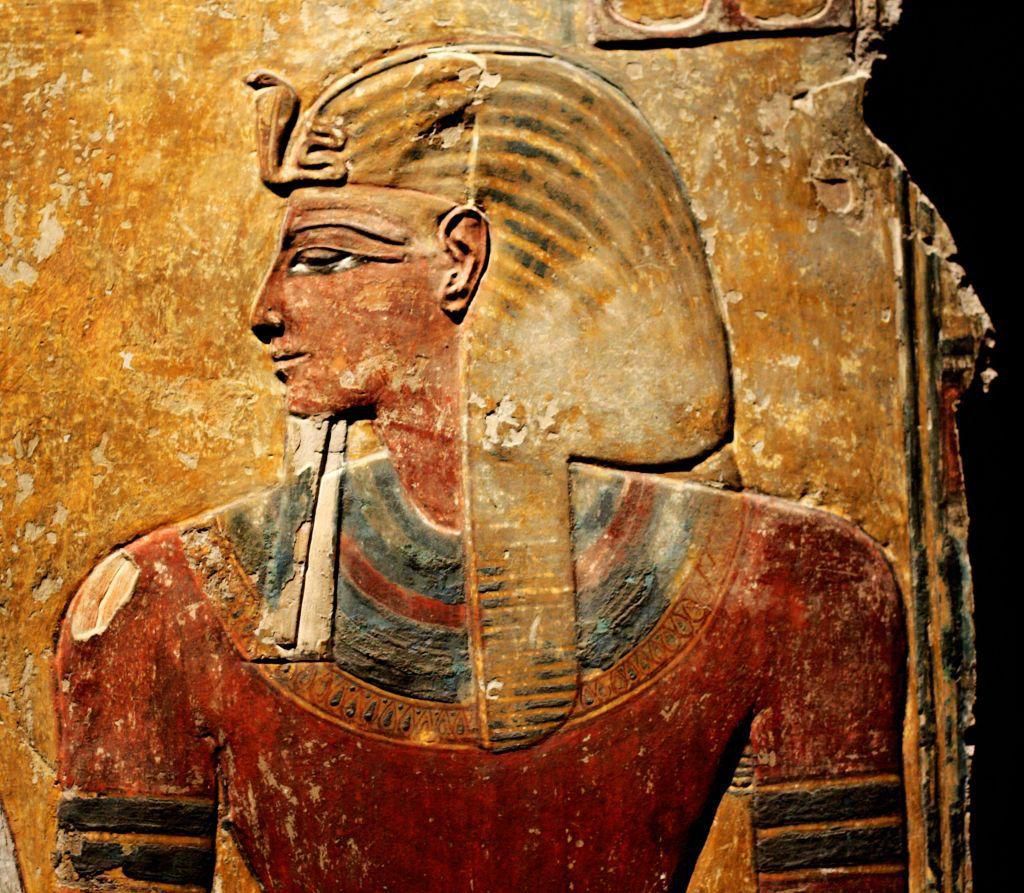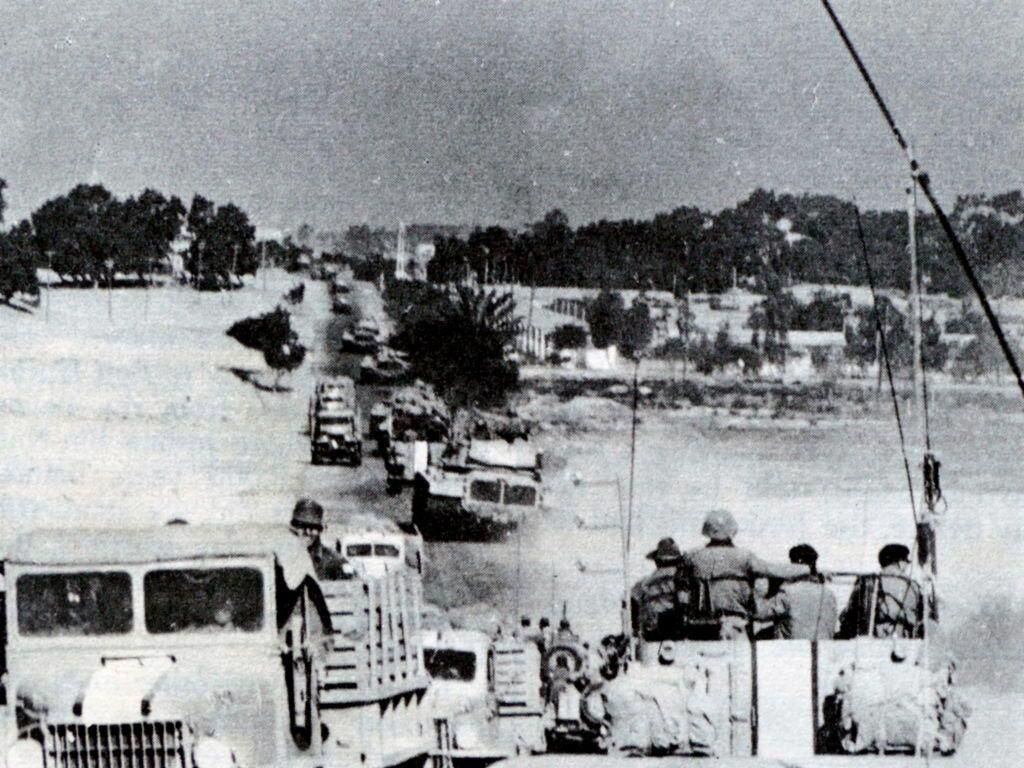:quality(75)/cloudfront-us-east-1.images.arcpublishing.com/elcomercio/A4UJWUVOKVERNOTO67EUKPQTWQ.jpg)
The military campaign of Israel against Hamas After the militant group’s offensive on October 7, it heads towards the south of the Gaza Strip and after four months is already at the gates of Rafa.
Israeli Prime Minister Benjamin Netanyahu announced that his forces will attack the city, where 1.5 million displaced Palestinians are gathered, because members of the organization responsible for the attacks that left 1,200 Israelis dead and more than 240 kidnapped are also sheltering there. .
WATCH: “The tank is very close”: the desperate cry for help made by a 6-year-old Palestinian girl (and her tragic end)
“It is impossible to achieve the war objective of eliminating Hamas leaving four of its battalions in Rafah“, declared the president on Friday.
But organizations such as the United Nations and the European Union, as well as governments traditionally allied with Israel, such as the United States and the United Kingdom, warned Netanyahu that the humanitarian cost of an offensive would be very high.
Palestinians in Rafah, most displaced from other Gaza towns already under Israeli control, said they have nowhere to go in the event of a massive military incursion because the border with Egypt is closed.
In this Arab country there is another Rafah. Both cities were once one, but centuries of invasions and wars ended with a city divided in two, crossed by one of the most conflictual borders in recent decades.
Since the time of the pharaohs
The origins of Rafa They date back 3,000 years, says the Jewish Virtual Library.
The first mention of this location appears in an inscription made in 1303 BC, during the reign of the Egyptian pharaoh Seti I, father of the famous Ramses II, who ordered the construction of some of the magnificent temples and monuments that today attract millions of people. of tourists annually to Egypt.
Seti I launched several military campaigns in the region and in Syria, says Israeli columnist Michael Freund, in his article “Rafah: A turbulent history”, in which he cites the studies of the late Israeli historian and geographer Zeev Vilnai.
Throughout history the city has been known by different names.: Robihwa by the Egyptians, Rafihu by the Assyrians, Raphia by the Greeks and Romans and, finally, Rafah by the Arabs.
And although the toponym Rafah does not expressly appear in the Torah (Hebrew Bible), experts consider that the term “Hatzerim”, with which a city is named in the book of Deuteronomy, refers to it.
Due to its location south of the Gaza Strip, at the entrance to the Sinai desert (Egypt) and facing the waters of the Mediterranean, the city became not only an important regional navigation and trade center, but also an important center navigation and regional trade. scene of numerous conflicts.
One of the most famous battles to take place at Rafah occurred around 217 BC, when the Egyptian king Ptolemy IV defeated the Syrian emperor Antiochus III.
“It is considered one of the greatest battles of the classical era with a total of 120,000 to 150,000 soldiers and around 175 elephants ready on the battlefield”, summarized Israeli-Canadian writer Brandon Marlon, in his article “Rafah: A brief history”, published in the newspaper “The Times of Israel ”. “.
To seal peace, the defeated man married his daughter Cleopatra Sira to the son of his enemy and the wedding was celebrated in Rafah.

From splendor to oblivion
Over the centuries, the city became the seat of an important Jewish community, as described by the 1st century AD historian Flavius Josephus in his book “The Wars of the Jews”. A situation that remained unchanged, despite the arrival of the Greeks, the Romans and later the Muslims.
However, all this would change with the crusades. In the 12th century the city was razed and the inhabitants who were not killed were forced to move to other locations.
During the Middle Ages, when the Ottoman Empire took control of the region, the city ended up becoming a simple postal station at the gates of the desert.
Despite its loss of relevance, Rafah continued to be the scene of bloody battles that reduced it to rubble on several occasions. So, for example, at the end of the 19th century, General Napoleon Bonaparte’s French forces destroyed it as part of his campaign to conquer Egypt and Syria, Brandon recalls.
In the early 20th century, Zionist organizations attempted to acquire land in the area to repopulate it with Jews fleeing persecution in Europe. However, the plan was rejected by the Ottoman authorities.
The initiative was tried again when the territory came under British control, after the First World War (1914-1919) and the disappearance of the Ottoman Empire, but it was also unsuccessful.

From military base to refugee camp
During World War II, Rafah served as a base of operations for the British army and attracted Muslim migrants from other parts of Palestine in search of work.
At the beginning of the division of the territory to create what is now Israel and a Palestinian Arab state that did not prosper, British forces used the city as a prison to arrest Hagana and Irgun leadersJewish organizations considered terrorists.
However, after the founding of the State of Israel, the city began to acquire its current profile as a large refugee camp.
Around 41,000 Muslim Palestinians who, until then, lived in areas now attributed to nascent Israel – such as Beersheba and the Negev desert – ended up moving to the small city.
In 1949, the Rafah refugee camp was opened, which at the time “it was the largest and most numerous (…) in the Gaza Strip”according to the United Nations Palestinian Refugee Agency (UNRWA) website.
Since the outbreak of the current conflict, which left more than 28,000 dead, according to the Gaza Ministry of Health, run by Hamas, the population of Rafah has multiplied by five and gone from 280,000 inhabitants to almost 1.5 million, according to o UN agency.
Humanitarian organizations have assured that the vast majority of these refugees live in deplorable conditions, almost no access to food, drinking water and medicine.

The Berlin of the Middle East
Since 1948, the year the State of Israel was founded, the city, like the rest of the Strip, was under the control of Egyptian forces. But that changed in June 1967, when, after the Six-Day War, Israeli forces occupied all of Gaza and the neighboring Sinai Peninsula.
In the 1973 Yom Kippur War, Egypt failed in its attempt to recover lost territory by force, but almost a decade later it achieved at the negotiating table what it could not achieve on the battlefield: the return of Sinai, which materialized in 1982.
However, the 1977 Camp David peace accords affected Rafah, because the border line between Israel and Egypt was drawn over it. A situation that transformed the Palestinian city into a kind of Berlin after the Second World War, because a fence was built that crossed houses, backyards and streets and divided it in two.
“The inhabitants of the houses divided in half will have to decide in which jurisdiction they want to live (whether Israeli or Egyptian) and open a door on the chosen side”, reported journalist Janet Hawley, in an article published in 1982 in the Australian newspaper “The Sydney Morning Herald”, in which she reported on the partition.
This new division dismembered hundreds of families, whose members were separated by a fence that, over time, was reinforced and around it a “no man’s land” called the Philadelphia corridor expanded.
The Philadelphia Corridor is a demilitarized zone created to “contain terrorism, arms smuggling from Egypt to Gaza and the infiltration of criminal activities”, says an agreement between the Israeli and Egyptian governments.

For decades there were two Rafahs, one in occupied Gaza and the other in Egypt, but that began to change in 2013. That year, the Cairo government demolished homes, businesses and other structures located near the border fence with the Strip. . The reason? Widen the corridor and create a “buffer zone” with Palestinian territory measuring 79 square kilometers from the dividing line.
Demolitions accelerated after the Sinai-based armed group Ansar Beit al-Maqdis (Supporters of Jerusalem) carried out an attack on an Egyptian army checkpoint on October 24, 2014. The attack cost lives to 33 soldiers.
Between July 2013 and July 2020 Egyptian military demolished 12,350 structures near the borderleaving more than 12,300 families homeless, denounced the organization Human Rights Watch in a report published in 2021 and entitled “Egypt: mass demolitions in Sinai as probable war crimes”.
In the report, the group also states that soldiers destroyed more than 6 thousand hectares of plantations.
“In 2014, Egypt began another campaign to demolish houses and buildings along its border to expand the Philadelphia corridor,” explained Lorenzo Navone, researcher at the University of Strasbourg and the Convergences Migrations Institute in France, to BBC Mundo.
“Therefore, today the area of land that included the corridor has almost doubled with the aim of being able to control the border and being able to keep the Palestinians in Gaza. What was once a “no man’s land” on the Gaza side of the border now also extends alongside the Egyptian border”, he concluded.
With Israeli troops approaching Rafah, the city today writes another chapter in its turbulent and bloody history.

Source: Elcomercio
I am Jack Morton and I work in 24 News Recorder. I mostly cover world news and I have also authored 24 news recorder. I find this work highly interesting and it allows me to keep up with current events happening around the world.






